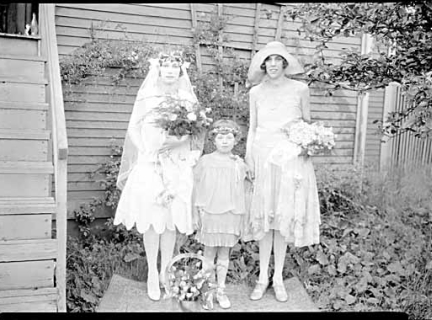Coats of Arms

The use of coats of arms dates back to the Middle Ages. Originally, coats of arms were granted to knights and were displayed on their armour. Eventually, the number of coats of arms and the potential confusion among them led to the development of an official class of heralds, who regulated such matters. The study of coats of arms is called heraldry.
A "coat of arms" is sometimes also correctly referred to as a "heraldic achievement" or "armorial bearings". Many people also use the terms "coat of arms" and "crest" interchangeably. However, a coat of arms is not the same thing as a "crest". A crest is just one part of a coat of arms. Specifically, it is the part of a coat of arms that appears at the top, above the shield. There are books of family crests, but these books will not show you a family's full coat of arms, just the "crest" part of it.
There are two ways to legitimately acquire a coat of arms. One is to establish a hereditary claim, and the other is by a new grant.
Hereditary Claims
If an ancestor of yours was granted a coat of arms, then you may have a hereditary claim. However, it is important to understand that there is no such thing as a "family" coat of arms. A coat of arms is granted to an individual, not to a family. It can be passed to a person’s descendants, through the direct male line. However, the descendants add what are called "difference marks". Difference marks are standardized. For example, an eldest son adds a difference mark called a "label" to his father’s coat of arms. A second son adds a crescent, a third son a mullet, and so on. There are a total of nine standard difference marks. After the father dies, the eldest son can use his coat of arms without the label.
In medieval times, the right to use a particular design as a coat of arms was granted by the ruler of a country to someone who had done him a great service. There is very little chance that one of your ancestors was granted a coat of arms in this way. It is possible that a coat of arms was granted to a person of the same surname, but it is not your coat of arms unless you can prove that the person was your direct ancestor and that the coat of arms was passed down the family line, through the direct male descendants, to you.
It is very difficult to do this. Over the centuries, many families have taken arms that belonged to other families of the same name, usually without authority and without demonstrating that the families were related. Therefore, even if you can trace the use of a coat of arms by your ancestors over a long period of time, it does not necessarily mean that it is your coat of arms.
Moreover, reference books about coats of arms often contain errors, making it very difficult to prove a claim. The most reliable way to prove that you have a hereditary claim to a coat of arms is to have a heraldic expert search the records of one of the heraldic authorities. In Canada and the British Isles, these authorities are:
- Canadian Heraldic Authority
- College of Arms (England and Wales)
- Court of the Lord Lyon (Scotland)
- Office of the Chief Herald (Ireland)
Other European countries have a long history of using coats of arms, similar to the British Isles, but unlike the British Isles, they do not have heraldic authorities. There are, however, non-governmental offices that regulate the use of coats of arms in Austria, Belgium, Germany, the Netherlands, Norway, Spain, and Sweden. For more information, contact a consulate or embassy.
Otherwise, if you find a coat of arms for your surname in a reference book – or if you are offered one by a commercial outfit – it probably only means that sometime, somewhere, a person with the same surname as you was granted a coat of arms. More likely than not, it had nothing to do with your ancestors.
New Grants
If you cannot establish a hereditary claim to a coat of arms, you may be able to have a coat of arms created for you. Of course, you can create your own, or have one for you created by a commercial outfit, but it will have no official status. To be an official, legitimate coat of arms, it must be created by one of the heraldic authorities. These authorities have been delegated the right to grant arms originally exercised by the monarch in medieval times.
The granting procedure typically includes submitting a petition, which is then reviewed. Factors such as the petitioner’s contribution to the community are considered. If approved, the petitioner works with a herald on the design of the new arms. There are substantial fees involved in petitioning for and obtaining a new grant. These vary considerably, but in Canada, the minimum total cost including processing fee, preliminary design, and artwork is around $1500.
